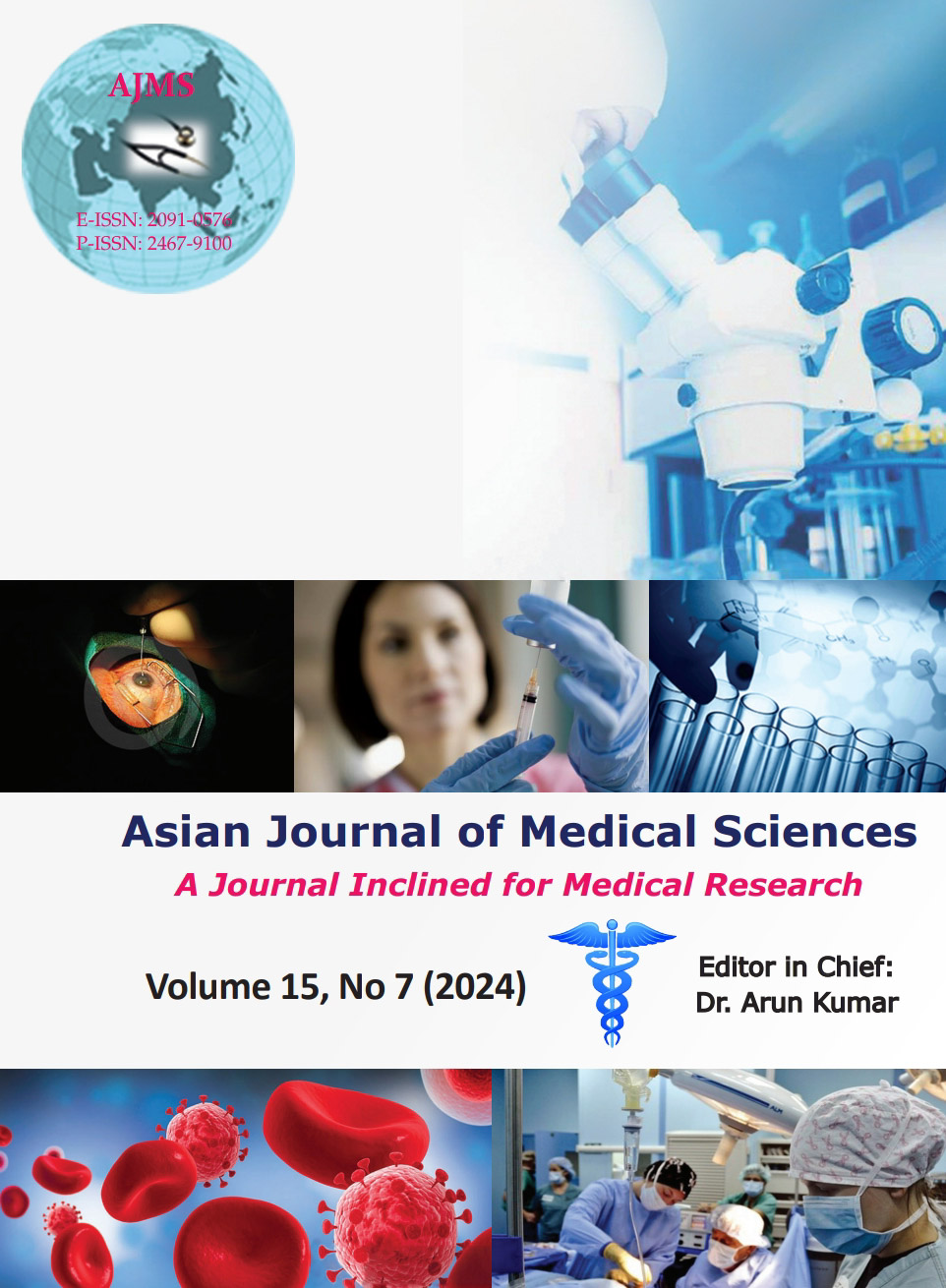A study of the association of lipid ratios with thyroid dysfunction in a tertiary medical college in Eastern India
Keywords:
Hypothyroidism; Hyperthyroidism; Lipid ratios; Cardiovascular disease riskAbstract
Background: Thyroid hormones play a crucial role in major metabolic pathways in the body and dyslipidemia is a major metabolic abnormality seen in thyroid disorders. Cardiovascular diseases (CVDs) are now emerging as the leading cause of morbidity and mortality worldwide and the most important risk factor for CVDs is dyslipidemia. The lipid ratios that have a positive association with CVD risk are atherogenic index of plasma (AIP), Castelli’s risk index (CRI)-I and II, and atherogenic coefficient (AC). Clinically, both an excess and deficiency of thyroid hormones can exacerbate or induce CVDs and lipid ratio can be used as an inexpensive marker for predicting CVD risk.
Aims and Objectives: This study aims to evaluate the lipid ratios (AIP, CRI-I, CRI-II, AC) in patients with thyroid dysfunction and compare the results with lipid ratios in euthyroid individuals. This study also aims to find any correlation, if exists, between lipid ratios and serum thyroid-stimulating hormone (TSH) levels in thyroid dysfunction.
Materials and Methods: The serum TSH and lipid profile were evaluated in fifty euthyroid, fifty hypothyroid, fifty subclinical hypothyroid, and fifty hyperthyroid patients. The lipid ratios (AIP, CRI-I, CRI-II, AC) were calculated from the lipid profile.
Results: The mean lipid ratios were higher in hypothyroid, followed by subclinical hypothyroid cases when compared to euthyroid controls and hyperthyroid patients. A positive correlation was observed between the TSH and lipid ratios in euthyroid, hypothyroid, and subclinical hypothyroid subjects. There was no significant correlation between TSH and lipid ratios in hyperthyroid patients.
Conclusion: This study demonstrates that the evaluation of lipid ratios along with TSH can provide an effective screening tool to assess the cardiovascular risk in patients with subclinical and overt hypothyroidism, especially in the absence of imaging techniques in resource-limited centers.
Downloads
Downloads
Published
How to Cite
Issue
Section
License
Copyright (c) 2024 Asian Journal of Medical Sciences

This work is licensed under a Creative Commons Attribution-NonCommercial 4.0 International License.
Authors who publish with this journal agree to the following terms:
- The journal holds copyright and publishes the work under a Creative Commons CC-BY-NC license that permits use, distribution and reprduction in any medium, provided the original work is properly cited and is not used for commercial purposes. The journal should be recognised as the original publisher of this work.
- Authors are able to enter into separate, additional contractual arrangements for the non-exclusive distribution of the journal's published version of the work (e.g., post it to an institutional repository or publish it in a book), with an acknowledgement of its initial publication in this journal.
- Authors are permitted and encouraged to post their work online (e.g., in institutional repositories or on their website) prior to and during the submission process, as it can lead to productive exchanges, as well as earlier and greater citation of published work (See The Effect of Open Access).




